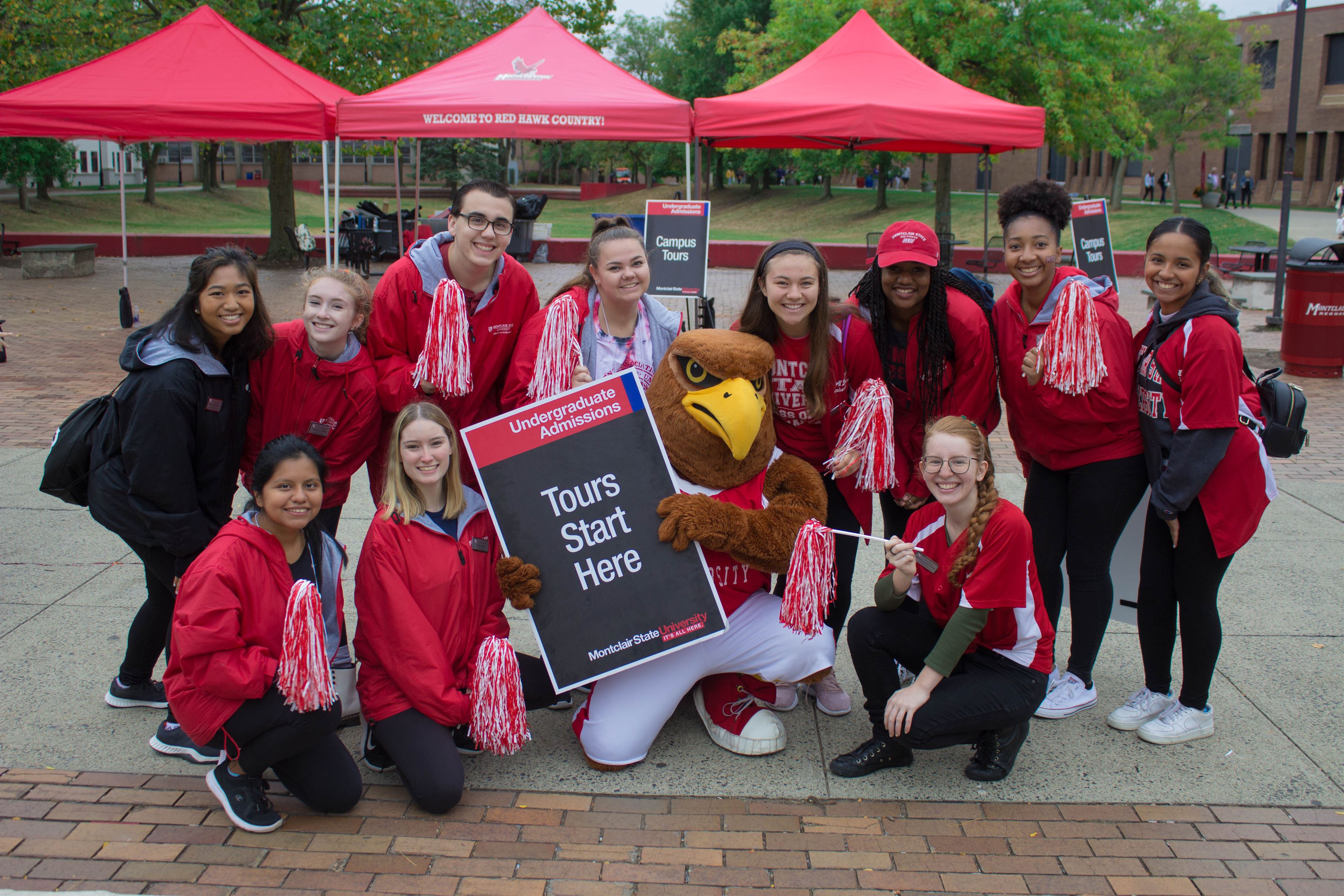As the clock strikes 10 a.m. on a cloudy, Tuesday morning, nervous high schoolers accompanied by their parents wait to tour Montclair State University. A student ambassador makes the announcement that parents and students can help themselves to some light refreshments. Then the tour begins, first heading to the School of Business, University Hall and then the Student Center.
Scenes like this happen routinely during the school year as the student ambassadors, dressed in their iconic red Montclair State jackets, show students and parents the campus.
Fred Stolarski, Visit Experience Coordinator, shares his thoughts about how important student ambassadors are for students and their families.
“Ambassadors are generally the first and often the only contact prospective students and their families have when interacting with our university,” Stolarski said. “This interaction often gives [families] their only impression of Montclair State.”
With all of this pressure, ambassadors have a lot to learn about the school.
To become an ambassador, a student has to apply online and go through an interview process with a student coordinator or a graduate assistant. The chosen candidate must then take on the responsibility of studying and memorizing all of the facts about campus.
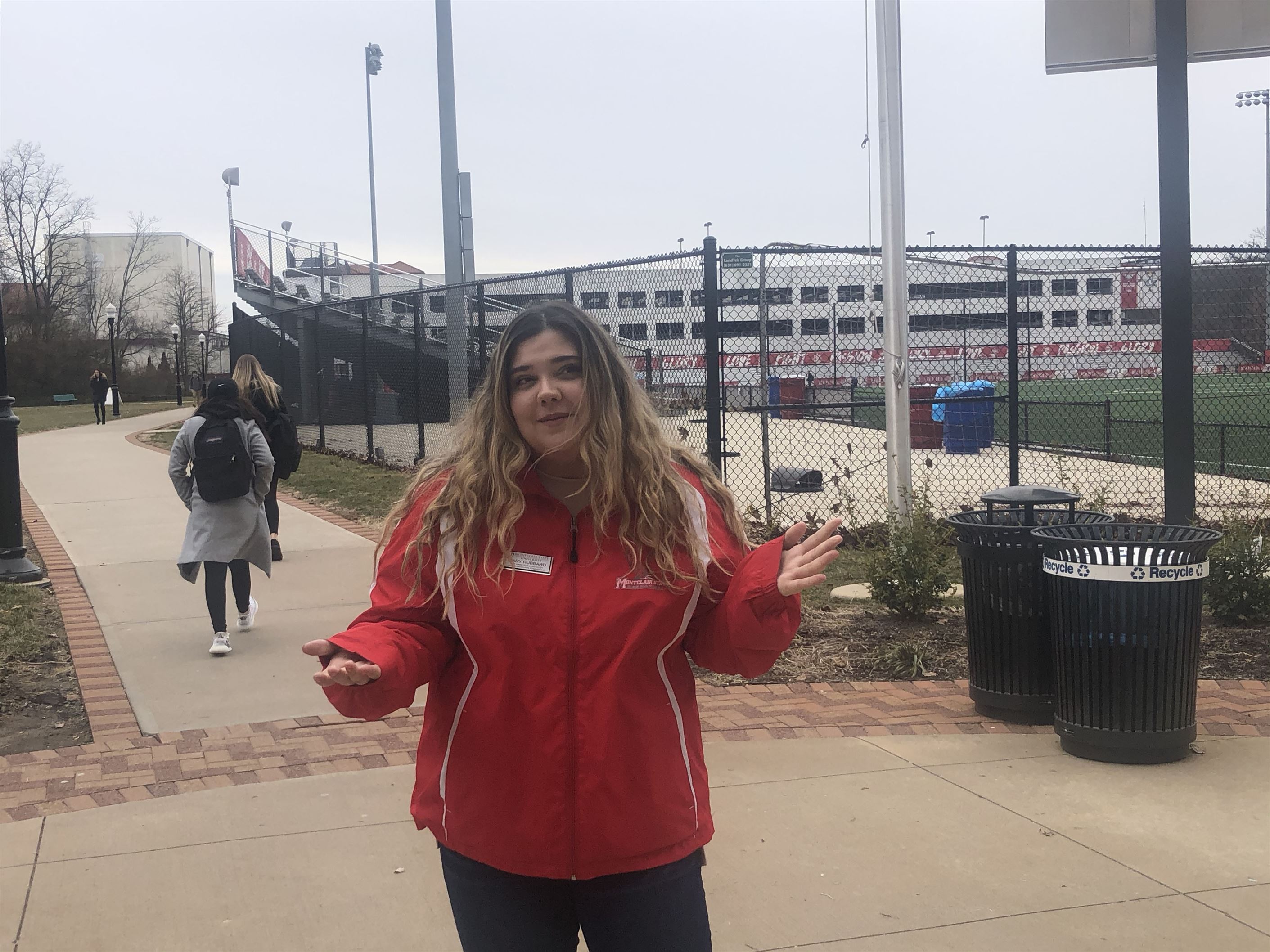
Mary Hubbard explaining the history of Sprague Field.
Gabriella Dragone | The Montclarion Photo credit: Gabriella Dragone
Mary Hubbard, a senior linguistics major and former student ambassador, reflects on the routine-based practice that comes with being a student ambassador.
“You have to go through a whole training process,” Hubbard said “There’s a tour guide route that is six to seven pages long of information that you have to know.”
The future ambassador is then assigned a mentor who teaches them the route, helping the student study the information and training them several times a week.
Hubbard further continued her thoughts about the student ambassador program and how crucial the knowledge of the campus can be.
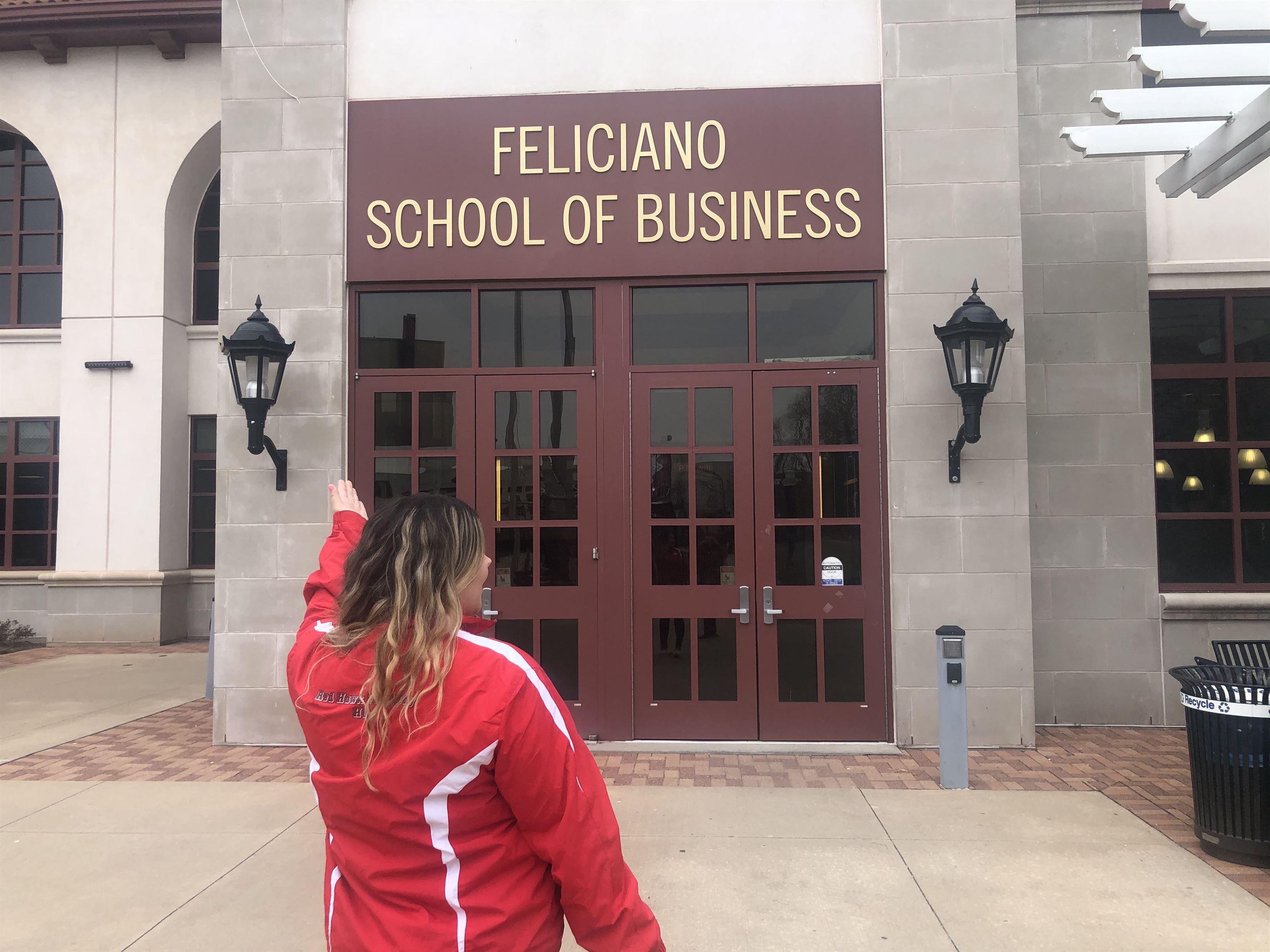
Mary Hubbard talks about the many opportunities Montclair State has for business majors at the Feliciano School of Business.
Gabriella Dragone | The Montclarion Photo credit: Gabriella Dragone
“It’s a lot of work, you don’t think it’s as much, but I mean you’re representing the school,” Hubbard said “If you take somebody on a tour and you have no idea what you’re talking about, it’s going to reflect poorly on us.”
Once the information is memorized, the candidate then partakes in a final test. The candidate must give a tour to the program coordinator as if the coordinator were a prospective student. The coordinator then determines if the candidate can facilitate a campus tour on their own.
One ambassador, Haily Bunnell, a sophomore business administration major, has her own tricks to remembering all of the facts.
“Make visual notes,” Bunnell said. “When learning facts I will tie everything into a landmark or sign around campus.”
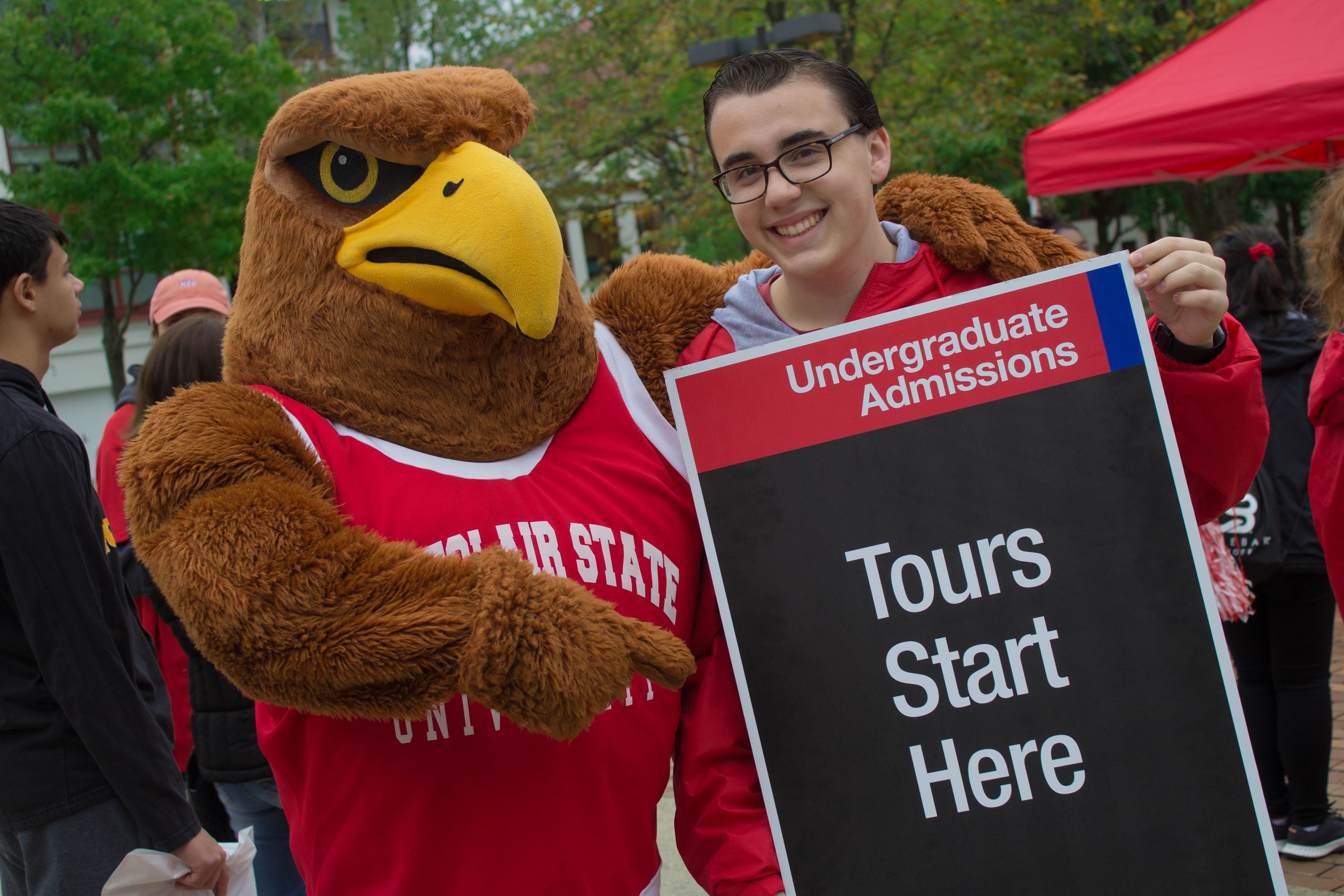
Kyle Kennedy posing with Rocky the Red Hawk at the Fall 2019 Open House.
Photo courtesy of Kyle Kennedy. Photo credit: Courtesy of Kyle Kennedy
As new buildings are being built and new programs are constantly being introduced, information is always changing. Along with memorizing several facts, there are still challenges that the ambassadors face while giving a tour.
In adapting to situations one is not prepared for, Hubbard reminisces on how she had to adjust.
“Handling situations that you’re not necessarily trained for is a challenge,” Hubbard said. “I once got a student who was talking about very personal things on our tour and you just kind of have to handle it professionally.”
When dealing with the cold, Kyle Kennedy, a sophomore English education major, bundles up in a hat, gloves and hand warmers. He then puts on a big smile and tries his best to make people forget how cold it is.
“I’ve given tours in five degree weather with 20 miles per hour winds and it is sometimes hard to deal with these types of tours,” Kennedy said. “However, it also has been some of the best tours.”
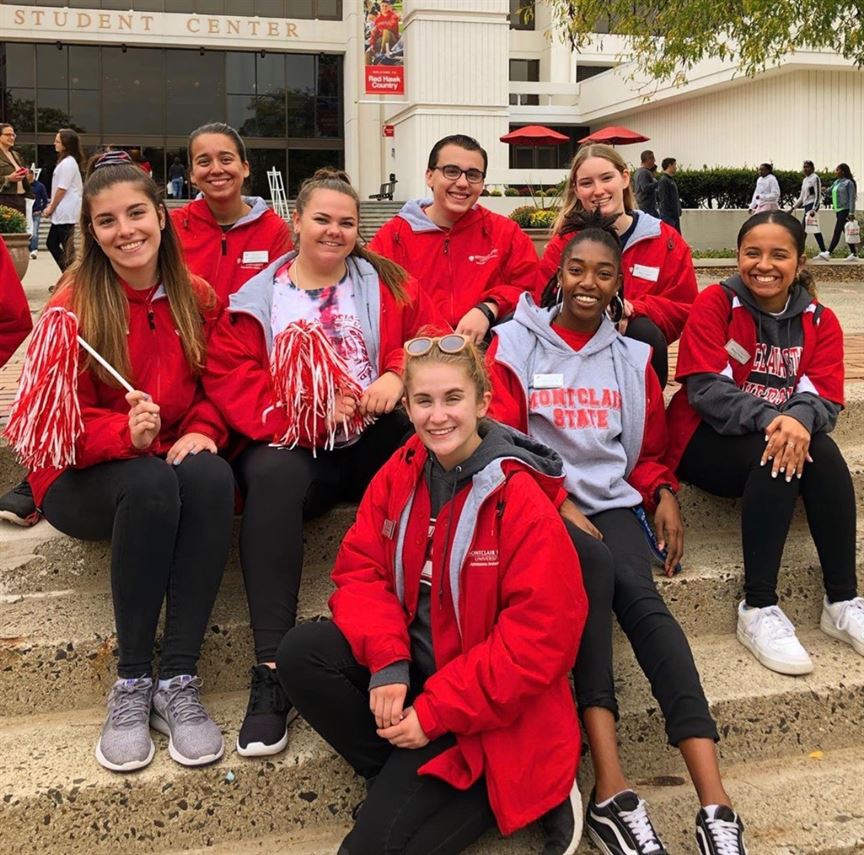
Student Ambassadors at the fall 2019 Open House.
Photo courtesy of Kyle Kennedy Photo credit: Courtesy of Kyle Kennedy
Along with weather conditions, there are often unique questions that families may ask. Even in the most awkward of situations, Hubbard still follows protocol with a kind spirit.
“I had this one student who kept asking me about my relationship status,” Hubbard said. “We definitely get a lot of strange questions, but another perspective is that no question is weird because we have to answer what they ask, unless it’s crossing a line.”
At the end of every month, ambassadors get stipend of $15 for a full 9 a.m. to 1 p.m. shift. However, the job doesn’t end at tours.
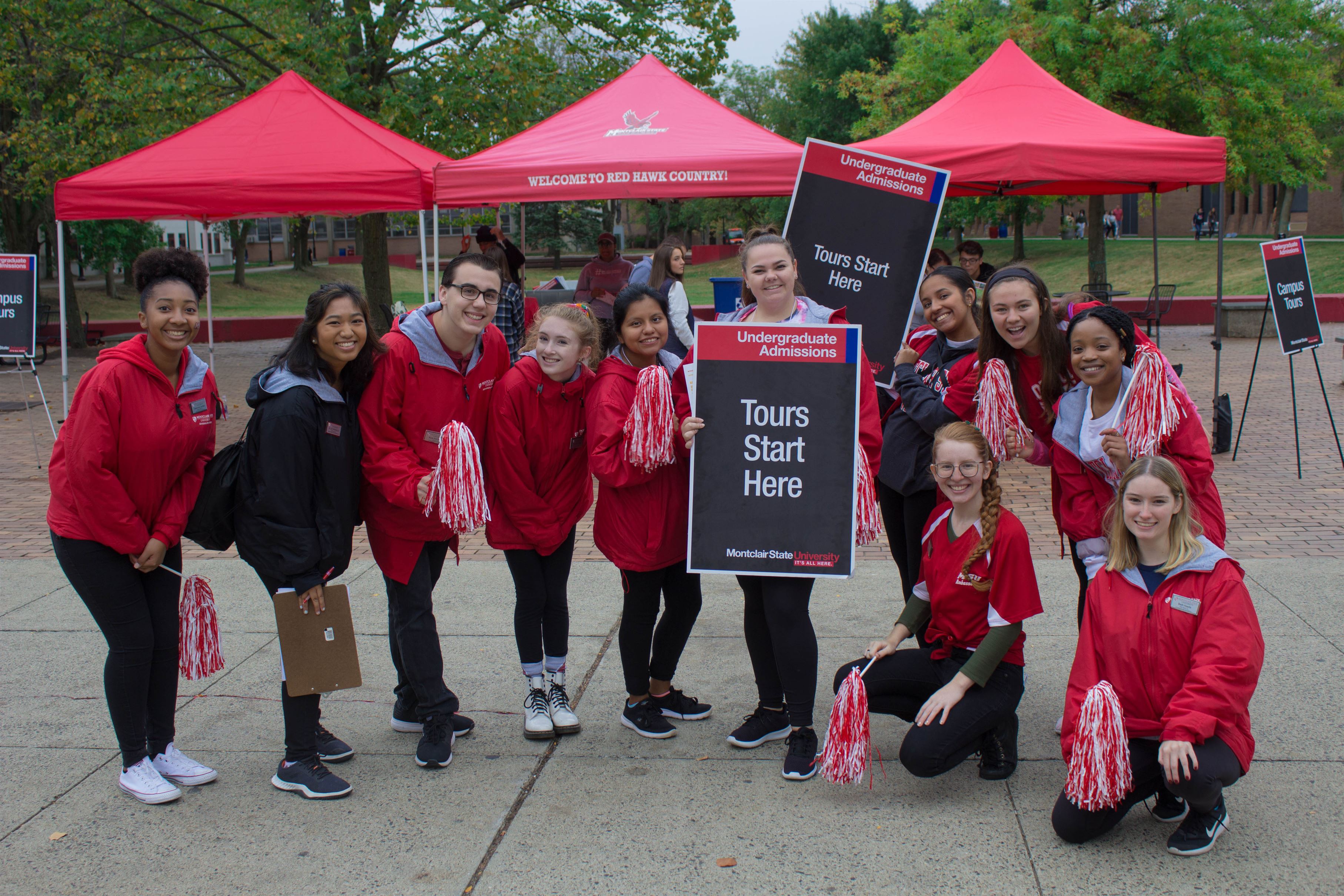
Montclair State’s Student Ambassadors prepare for the Fall 2019 Open House.
Photo Courtesy of Kyle Kennedy. Photo credit: Courtesy of Kyle Kennedy
Ambassadors have to work at every open house and Accepted Student Day from 7 a.m. until the end of the event as volunteers. Fortunately, this allows the tour guides to develop bonds with each other.
In reflecting about all the positive things that come with being involved in the student ambassador program, Hubbard shares how it can expand one’s social life on campus.
“It’s a nice experience and you get to know more people that I normally wouldn’t know,” Hubbard said.
After constantly giving positive information about Montclair State, the Ambassadors’ perspectives about the school hasn’t changed.
In thinking about his own view about campus, Kennedy shares his thoughts on all the optimistic parts Montclair State has to offer.
“I’ve always had a positive perspective on the school,” Kennedy said. “[Montclair State] has amazing programs and majors and campus life. I feel like I’ve gained a better appreciation of [Montclair State] and every time I go to work, I am reminded that going to [Montclair State] has been one of the best decisions I’ve made in my life.”

